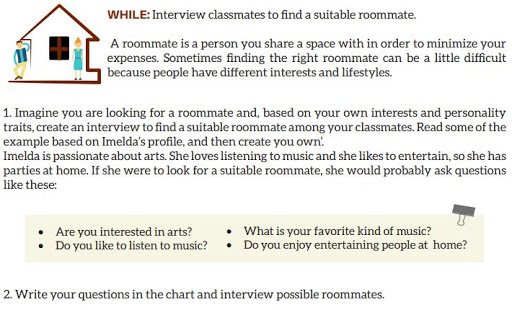Point (.)
The most
common use of the dot is at the end of a sentence, when we have finished
stating a complete idea.
-->Johnny
grew up in Birmingham in the 1980s. (Johnny creció en Birmingham en los años
ochenta.).
Comma (,)
There are
people for whom eating is like breathing, as it acts as a pause in the
sentence. Its most frequent uses are:
To separate
sentences (grammatical structure formed by a subject and a predicate),
especially when they are joined by: "and, but, so, or, nor, yet o
for"
-->I
hadn't finished my homework, but I decided to go out anyway (No había terminado
los deberes, pero decidí salir de todos modos).
-->Sally
was feeling upset, and Romesh was not helping (Sally estaba molesta, y Romesh
no ayudaba).
Semicolon
(;)
The
semicolon is like the big brother of the comma. You can use it when you want to
join two separate (independent) sentences that are related to each other, but
between which no conjunction has been used.
-->I
clean my teeth everyday; I don't want to end up with tooth decay (Me lavo los
dientes todos los días; no quiero acabar con caries).
Two points
(:)
We put two
dots before we write lists:
-->For
your English class, you will need: a coursebook, a pen, a notebook, and a good
teacher (Para la clase de inglés necesitarás: un libro de texto, un bolígrafo,
un cuaderno y un buen profesor).
We also use
them to connect two independent sentences, when the second one expands,
explains or adds information to the first one:
-->She
had always loved grammar: she owned multiple dictionaries and had verb lists
all over the walls of her study (A ella le apasionaba la gramática desde
siempre: poseía múltiples diccionarios y tenía listas de verbos en todas las
paredes de su despacho).
Apostrophe
(')
Many people
make mistakes with the apostrophe, but the rules are pretty clear. The
apostrophe is used for contractions:
-->Es la
chica más lista del colegio → She's the smartest girl in the school (She's =
She is).
-->Estaremos
allí a las 7 de la tarde → We'll be there at 7 p.m. (We'll = We will).
-->¿No
crees que el verano es mejor que el invierno? → Don't you think summer's better
than winter? (Don't = Do not / summer's = summer is).
The other
main use of the apostrophe is in the Saxon genitive, to indicate possession:
-->This
is Dan's pencil case (Este es el estuche de Dan).
-->Leroy's
jacket is brown (La cazadora de Leroy es marrón).
Exclamation
mark (!) and question mark (?)
The
question mark in English always goes at the end of the questions, unless it is
an indirect question that does not begin with an interrogative formula:
-->Ask
in direct style: Where is the bank? (¿Dónde está el banco?).
-->Ask in
an indirect style with an interrogative formula: Would you mind telling me
where the bank is? (¿Le importaría decirme dónde está el banco?).
-->Question
in indirect style: I'd like to know
where the bank is (Me gustaría saber dónde está el banco).
Be careful
with the exclamation mark, as its use tends to be exaggerated, especially on
social networks, where it is common to come across phrases like “OMG!!! THAT IS AWESOME!!!” In any formal writing, the exclamation mark
should be used for only one thing: to exclaim, often in direct style:
-->''Hey!''
John shouted. "I'm here!'' (“¡Oye!”, exclamó John. “¡Estoy aquí!”).
complete
the following picture by putting into practice what you have learned
Sacado de:
https://www.britishcouncil.es/blog/signos-puntuacion-ingles

























